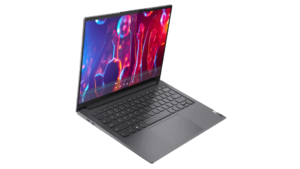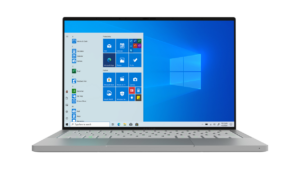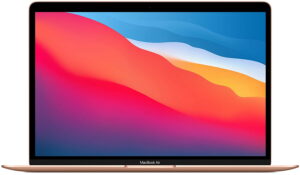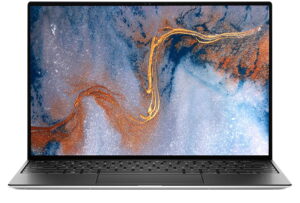The Lenovo Yoga Slim 7 Pro OLED sacrifices the opportunity to stand out on design, but settles for standout specs and performance instead.
Lenovo Yoga Slim 7 Pro OLED review
The Lenovo Yoga Slim 7 Pro OLED is a solid bang for buck option that sacrifices the opportunity to stand out on design, but settles for standout specs and performance instead. It may stumble when it comes to battery life, but that shouldn’t deter those excited by the potential pairing of an AMD Ryzen Mobile processor and a slick OLED display.
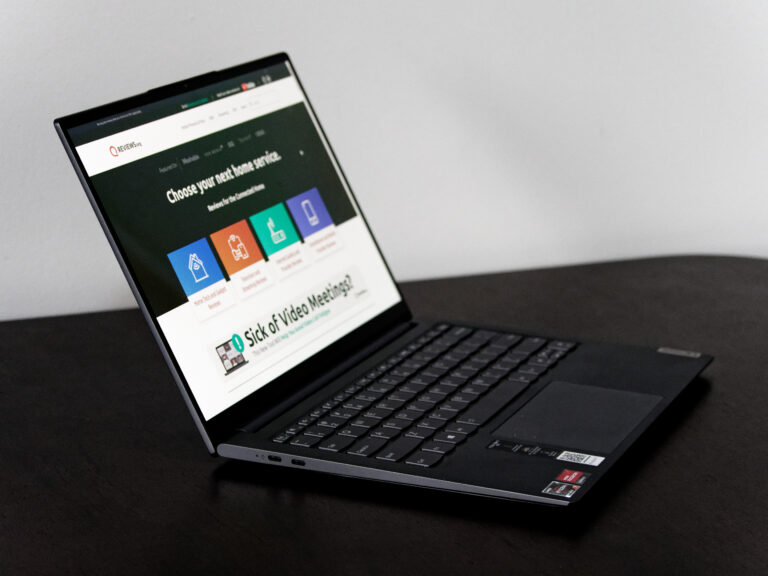
Design
Lenovo’s Yoga lineup is sometimes home to strange and experimental form-factors like that of the 2016 Yoga Book, but the new Lenovo Yoga Slim 7 Pro OLED plays things safe by comparison. What you see is what you get here. A classic clamshell design, with a modern attention to detail and a gorgeous screen.
In a nod to the mobility-focused niche that Lenovo’s Yoga range typically caters to, the two halves of the Yoga Slim 7 Pro OLED are bound together by a hinge that extends up 180-degrees. Practically, this means you can lay the device more-or-less flat on a surface, but it feels like any practical flexibility of this inclusion is quickly outweighed by the peace of mind it offers.
Unless you were hoping to use this device as you would a tablet or watch content in tent mode, the limits of the hinge are now one less thing you need to think about.
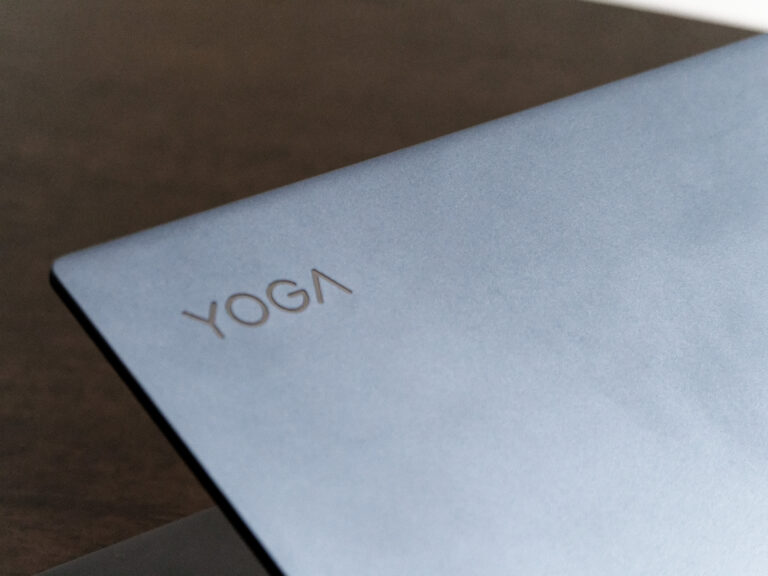
The display on the Lenovo Yoga Slim 7 Pro OLED remains the only major exception to the broader approach of refraining from trying to fix what isn’t broken. As the name might suggest, the laptop uses an OLED display rather than a traditional LCD-LED panel. This choice in display technology yields the usual benefits.
The OLED display on the Lenovo Yoga Slim 7 Pro delivers deeper blacks, higher contrasts and vivid colors. It’s also a little lighter than LCD-LED counterparts, since the OLED panel doesn’t require a backlight.
Beyond the basic benefits of OLED, the screen on the Lenovo Yoga Slim 7 Pro offers up to 2.8K resolution, 100% sRGB color for creatives, Dolby Vision support for those looking to watch HDR content and a 90Hz refresh rate for everything in between.
It’s worth noting that the Yoga Slim 7 Pro OLED’s display does boast a slightly more square 16:10 aspect ratio than many other laptops. This isn’t a downside, but it definitely took me an afternoon or two of usage to get used to. It’s also not a touch screen, which required me to reset my expectations in a similar way.
Glitzy screen technologies aside, the Lenovo Slim 7 Pro is more interested in function than flair. It’s got more ports than most other ultraslim laptops, while the keyboard keeps things satisfying from moment to moment.
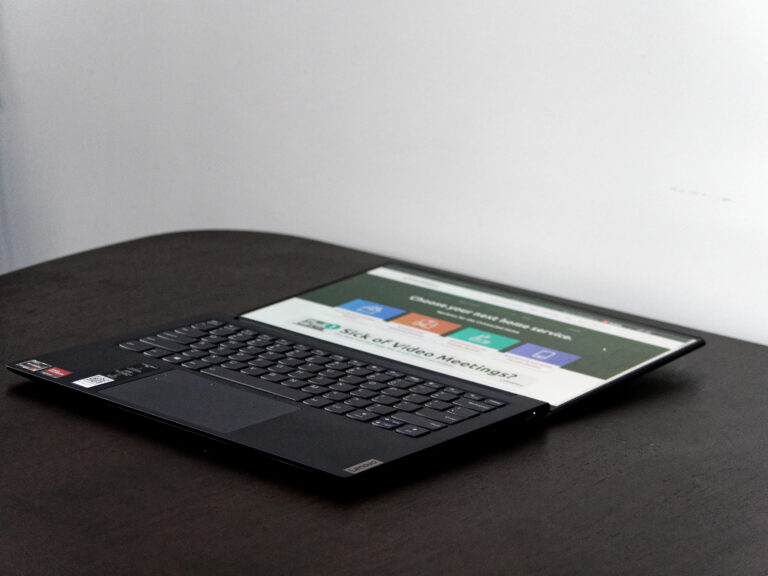
The aluminum chassis feels cool and professional to rest your hands on while using the device, but it doesn’t match machines like Apple’s MacBooks or Dell XPS lineup when it comes to character or polish.
There are a few other small touches, such as a raised camera notch that makes it a little easier to open the laptop with one hand. However, for the most part, the name of Lenovo’s latest says it all.
There’s an OLED screen, a Yoga-style hinge and a form-factor that feels all the slimmer in light of the performance that the Lenovo Yoga Slim 7 Pro delivers.
Lenovo Yoga Slim 7 Pro OLED specs
Graphics: There is a model equipped with a NVIDIA GeForce MX450 graphics card for those who want a little more grunt. However, this MX-series card is more suited for professional 3D modelling or video rendering use cases than for gaming. It may help on that particular front, but those seeking more frames-per-second in Fortnite or Call of Duty may want to consider a proper gaming laptop.
Lenovo Yoga Slim 7 Pro OLED performance
While the guts of the Lenovo Yoga Slim 7 Pro OLED resemble the same combination of LPDDR4X memory and PCIe NVMe SSD storage you’ll find in most modern laptops of its class, the Ryzen 7 Mobile processor inside the laptop is really where a lot of value comes from.
Within AMD’s current mobile chipset roster, the Ryzen 7 5800HS is only a step down from the top-of-the-line Ryzen 9 alternatives. In practice, that supremacy means that the Lenovo Yoga Slim 7 Pro OLED loads fast and juggles dozens of tabs in Firefox without missing a beat.
When it comes to the essentials, the brute force approach of AMD’s Ryzen hardware yields consistent results. Our benchmark testing of comparably-priced laptops typically found the Lenovo Yoga Slim 7 Pro OLED ranked towards the top of the leaderboards.
Even if it couldn’t quite manage to beat out Apple’s M1-powered Macbook Air across most fronts, the Lenovo Yoga Slim 7 Pro OLED did show a clear lead when it came to Cinebench’s Multi Core test and the Novabench benchmark.
That being said, unless you opt to upgrade to the model with a NVIDIA GeForce MX450, the Lenovo Yoga Slim 7 Pro OLED is armed with an integrated AMD Radeon GPU. While the story is changing around integrated graphics, a lot of the usual caveats and limits still hold true.
When it comes to gaming, older titles like Warhammer 40,000: Dawn of War and modern-but-modest ones like Torchlight 3 were completely playable (though the fan did rev up for the latter). Unfortunately, more recent titles like Dishonored: Death of the Outsider and Shadow of the Tomb Raider were beyond the reach of the hardware here. It should go without saying, but you’re not going to be able to run Cyberpunk 2077 on this thing.
While those with a fast internet speed and a subscription to Microsoft’s PC Games Pass may be able to make good use of the OLED screen here via Xbox Cloud Streaming, those looking for a more traditional gaming experience on the Lenovo Yoga Slim 7 Pro OLED are going to have to settle for what it can offer or look elsewhere.
Burned down via streaming video content on YouTube, the 61Wh battery inside the Lenovo Yoga Slim 7 Pro OLED lasted 6 hours hours and 41 minutes. That’s a modest effort, and it won’t be a hassle for those looking at using the device for short bursts.
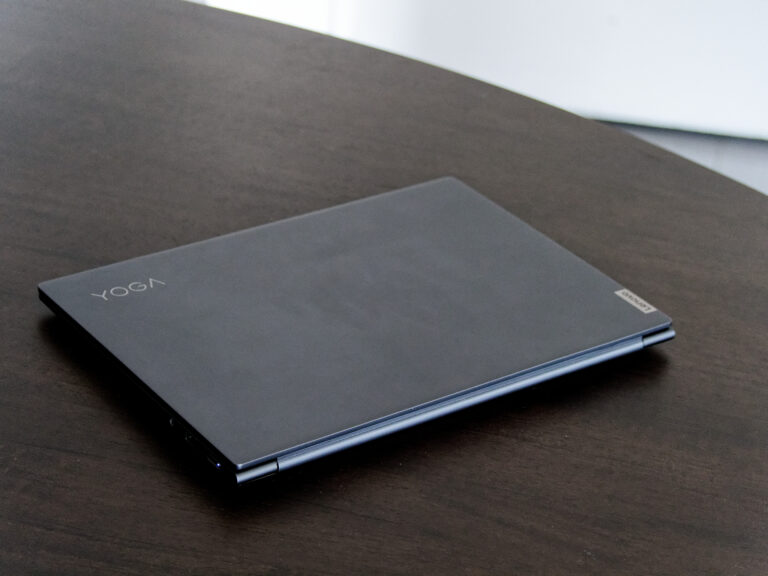
Unfortunately, there’s a clear gulf here between this device and category leaders like Apple’s new MacBooks, the Razer Book 13 and Dell XPS 13. Arguably, battery life is the one front where the Lenovo Yoga Slim 7 Pro OLED fails to live up its ethos of delivering more with less. Instead, you just get less.
For some, the impact of this blow to the Lenovo Yoga Slim 7 Pro OLED’s appeal may be softened by the fact that the device supports rapid charging via the 95W USB Type-C charger that it ships with. Lenovo claims that fifteen minutes of charging will get you around 3 hours of usage. You can also use other USB-Type C chargers, but doing so will likely prolong the process.
Conclusion
Is the Lenovo Yoga Slim 7 Pro OLED worth the price?
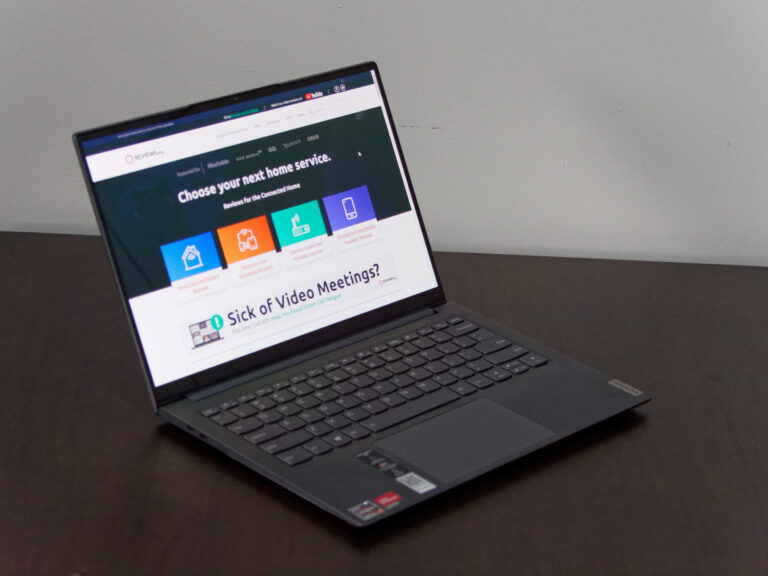
It’s often hard to find a sweet spot when it comes to price and performance among modern laptops.
A great design can be saddled with bad thermals, and a workhorse PC can seem mundane if the looks don’t live up to the same highs. The Lenovo Yoga Slim 7 Pro OLED circumvents these problems by opting to work smarter rather than harder.
The AMD Ryzen 7 5800H CPU inside the machine isn’t necessarily the most powerful piece of silicon you can find in a laptop nowadays and the design, while slim, is far from the slimmest out there. Nevertheless, on both fronts, Lenovo’s latest gets most of the way there for less than $2000.
Clad in the glamor of an OLED display that’s going to impress those who haven’t had the pleasure prior, Lenovo’s latest doesn’t feel the need to overstate or hype itself. The hardware does most of the talking, and the name sums things up nicely.
Why build a laptop that reset the expectations of consumers when you could design one that’s geared to walk away a winner from a head-on collision with them? The Lenovo Yoga Slim 7 Pro OLED is a clear choice for those who want to save a bit of cash on their next laptop with minimal compromises.
How we review laptops
Whether you're looking at a mainstream computer brand like Dell or a dedicated gaming brand like MSI, there's an immense number of decisions you'll need to make when purchasing a laptop. If you're not sure where to start, here are a few important features to consider when shopping for your next laptop:
- Screen size and type: Unlike upgradeable components like your GPU, RAM and storage, you're stuck with the display you buy when you purchase a laptop. Is it a comfortable size? Does it offer a wide-viewing angle?
- Resolution: Similarly, you can't change your display's resolution after the fact. 1080p (Full HD) is the bare minimum these days and most laptops worth their price tag aim for 1440p at least (QHD or QuadHD) but you can also opt for 4K if you're willing to spend a little extra.
- Refresh rate: A screen's refresh rate is the measurement of how frequently it changes. If you play fast-paced multiplayer games like Call of Duty, you know that the difference a few milliseconds that a high refresh rate gets you can count for a lot. The higher the refresh rate, the better. Most conventional laptops offer 60Hz to 90Hz but fancier gaming laptops can offer 144Hz, 165Hz or even 240Hz screens.
- Ports and connections: Like your screen, ports will impact your everyday experience with a laptop, particularly if you use it for work. While you can work around this with USB hubs and adapters, a laptop with fewer ports than you need can quickly become a headache.
- Future-proofing: There are no hard and fast rules here but as a general suggestion, you'll want to sure you're laptop has the legs to survive a few years of technology improvements in any way you can. You can overshoot on your desired specs, spending more on a machine that's more powerful than you currently need, or opt for a model or brand that has support for upgrades down the track. Check which features of the machine are upgradeable. The Dell XPS 15, for example, supports additional RAM, while Apple MacBooks do not.
Check out our dedicated laptop buying guide for more suggestions on shopping for the best laptop for your needs.
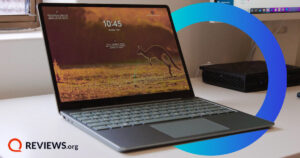
How we review laptops
Here are the big things we consider when reviewing laptops.
Related Articles




